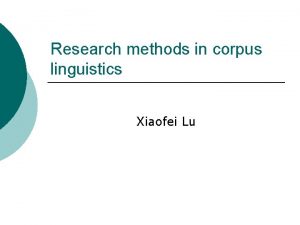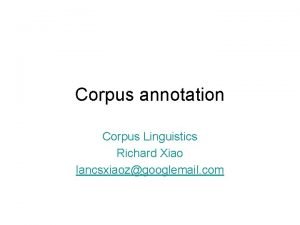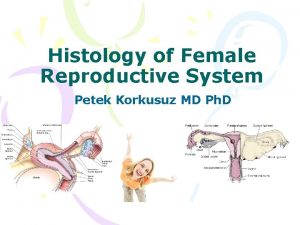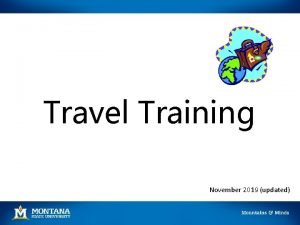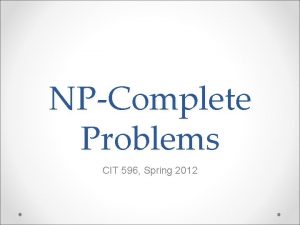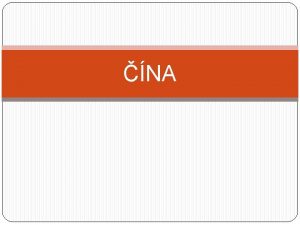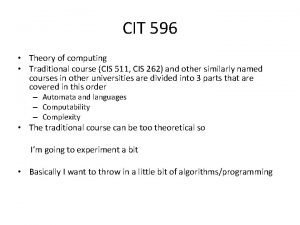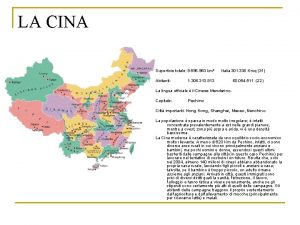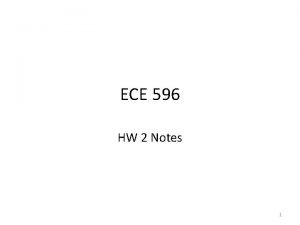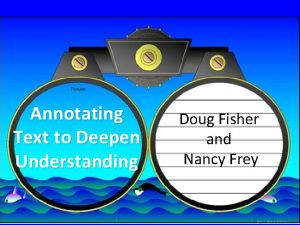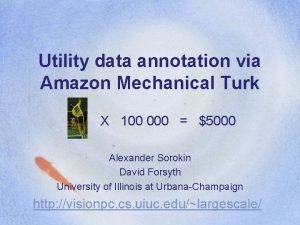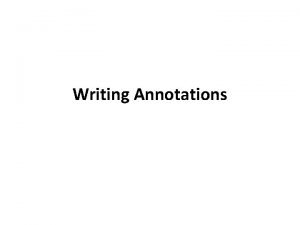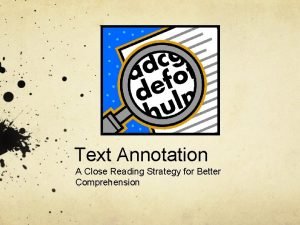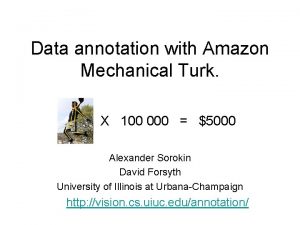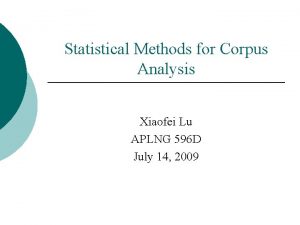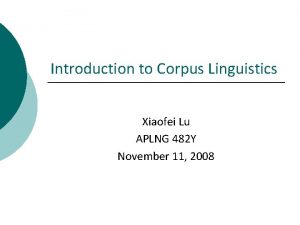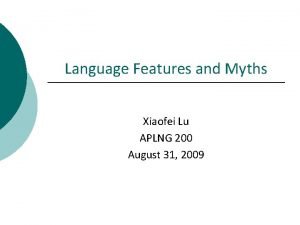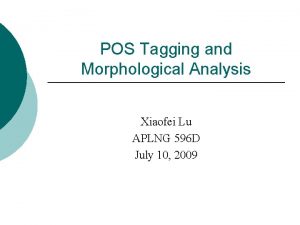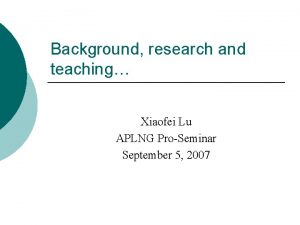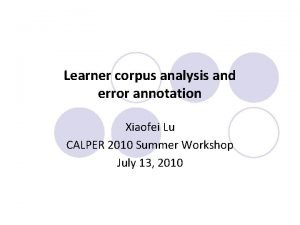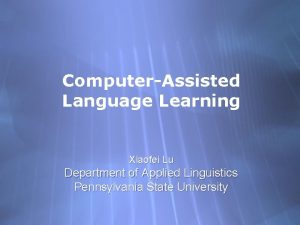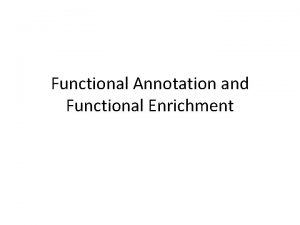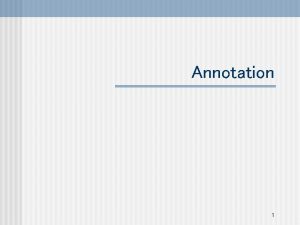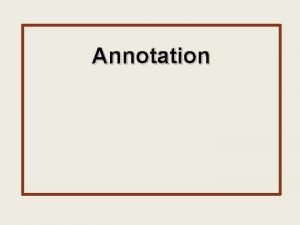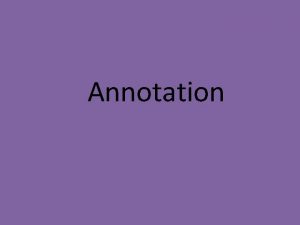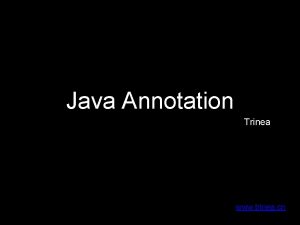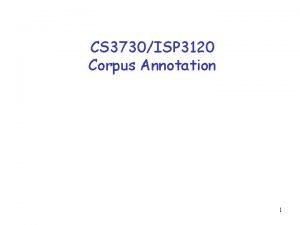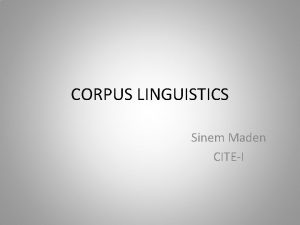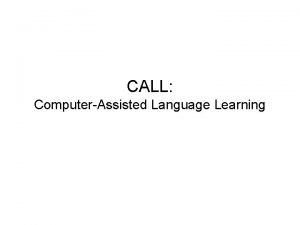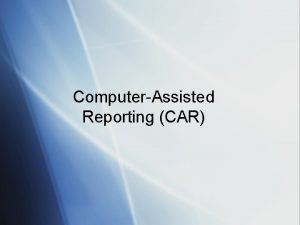ComputerAssisted Corpus Annotation Xiaofei Lu APLNG 596 D



















- Slides: 19

Computer-Assisted Corpus Annotation Xiaofei Lu APLNG 596 D July 9, 2008

Overview ¡ ¡ Discussion on manual annotation Issues in corpus annotation Granger (2003) Tools for computer-assisted corpus annotation

Issues in corpus annotation ¡ ¡ Annotation scheme Annotation format Annotation procedure Annotation quality

Annotation scheme ¡ What are the categories you are using? l l l ¡ Linguistically consensual Overspecification vs underspecification Use short, meaningful codes for your categories Example annotation schemes l l l POS tagging and bracketing Proposition Bank (Prop. Bank) Granger (2003)

Annotation format ¡ Considerations l l ¡ Compatible with annotation scheme Facilitates corpus query Example annotation formats l l Penn Treebank Prop. Bank WECCL Granger (2003)

Annotation procedure ¡ ¡ Annotator training Resolving problematic cases and annotator disagreements Automatic annotation + manual checking Computer-assisted manual annotation l l l Stanford annotation tool UAM Corpus Tool Note. Tab

Annotation quality ¡ Inter-annotator agreement l l Cohen’s Kappa Online Kappa calculator

Granger (2003) ¡ ¡ ¡ Learner corpora Error annotation Error statistics and analysis Integration of results into CALL Conclusion

Learner corpora ¡ ¡ ¡ What is a learner corpus? Difference from traditional data in SLA Difference from native language data l l ¡ Frequencies Errors From error annotation to error detection

Computer-aided error annotation ¡ Dagneaux, Denness and Granger (1998) l l l ¡ Manual correction of L 2 French corpus Elaboration of an error tagging system Insertion of error tags and corrections Retrieval of lists of error types and statistics Concordance-based error analysis Tagging system l l Informative but manageable Reusable, flexible, consistent

Error tagging system ¡ Dulay, Burt & Krashen (1982) l l ¡ System based on linguistic categories (e. g. , syntax) Surface structure alternations (e. g. , omission) Granger (2003)’s three-dimensional taxonomy l l l Error domain Error category Word category

Error tagging system ¡ Error domain and category l l l ¡ General level: grammatical, lexical, etc. Domains subdivided into error categories Table 1, page 468 Word category l l A POS tagset with 11 major and 54 sub-categories Makes it possible to sort errors by POS categories

Error tagging system ¡ Correct forms inserted next to erroneous forms l l ¡ Facilitates interpretation of error annotations Allows for automatic sorting on correct forms Tag insertion using a menu-driven editor

Error statistics and analysis ¡ Error frequency by domain or (word) category l ¡ ¡ Highest ranked domains: grammar and form Error trigrams Concordancers for searching error codes l l Ant. Conc Word. Smith Tools

Integrating results into CALL ¡ Goal: a hypermedia CALL program l l l ¡ Using NLP and Communicative approaches to SLA Traditional and NLP-enabled exercises Automatic error diagnosis and feedback generation Error statistics and analysis used to l l l Select linguistic areas to focus on Adapt exercises as a function of attested error types Adapt NLP tools for error diagnosis

Integrating results into CALL ¡ Most l l ¡ error-prone linguistic areas Tense and mood, agreement Articles, complementation, prepositions Adapting exercises l l l Exercises reflect type of error-prone context Formal errors through dictation and exercises targeting specific difficulties Attention to punctuation

Integrating results into CALL ¡ Adapting NLP tools for error diagnosis Spell checker and parser l Handles orthographic, grammatical, syntactic, and lexical errors l Not punctuation, semantic, and tense errors l

Granger (2003) summary ¡ Effective 3 -tier error annotation system l l ¡ Limitations of error-tagging l l ¡ Limited number of categories per tier Versatile automated data manipulation Element of subjectivity in annotation Focuses on misuse Usefulness of error-tagged learner corpus l l Error statistics helps understand learner interlang Helps adapt pedagogical materials and programs

Activity ¡ Using the Stanford annotation tool l l ¡ Annotate a short text using your own scheme, or Annotate a short learner text using Granger’s (2003) scheme Query the annotated text using Ant. Conc
 Xiaofei lu
Xiaofei lu Maxims of annotation in corpus linguistics
Maxims of annotation in corpus linguistics Follicle stage
Follicle stage Uterus layers histology
Uterus layers histology 596
596 Cit 596
Cit 596 9 596 960
9 596 960 Cit 596
Cit 596 Superficie cina
Superficie cina Hw 596
Hw 596 Annotation slows down the reader to deepen understanding
Annotation slows down the reader to deepen understanding Amazon data annotation
Amazon data annotation What is annotations
What is annotations Text symbols for annotating text
Text symbols for annotating text How to make a hole in autocad
How to make a hole in autocad Rainsford comes to the island because he
Rainsford comes to the island because he Amazon data annotation
Amazon data annotation Yesterday by patricia pogson
Yesterday by patricia pogson Bacteriophage annotation
Bacteriophage annotation What does o valiant cousin worthy gentleman mean
What does o valiant cousin worthy gentleman mean
